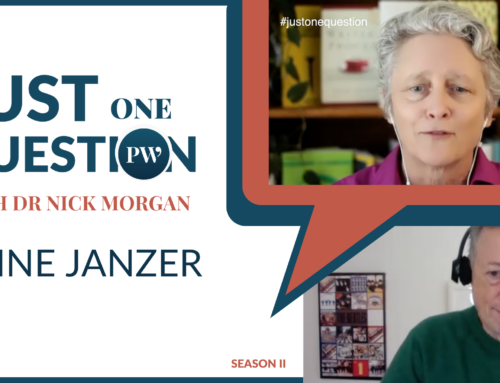This is the fourth post in a series about writing a book. Having just finished a new book on body language, brain science, and how people communicate, due out in May 2014 from Harvard, I’m posting a brief series on writing – what I’ve learned. Is it true that everyone who’s sentient has a book inside waiting to be expressed? What are the best ways to crank out a book-length manuscript? And once you have, what about publishing it? What does that terrain look like?
Last time I discussed the process from book proposal to celebrating a book contract. For this post, I’m going to talk about actually writing the book.
I’ll probably earn some deep hatred for saying this, but writing has always been a happy discipline for me. I have only two secret reasons. First, I read voraciously. Second, I have a two-step writing process. Let me explain.
First, the reading. Just as you would not expect to run the 100-meter dash, or whatever it’s called, without studying the competition, you need to read if you want to be a writer. In this way, you expand your options, your resources, your ways of getting from point A to point B.
Our era is a visual one. We all spent huge amounts of time taking information in visually – whether it’s TV, the movies, PowerPoint slides, or the Internet. Just in my professional lifetime, the pace of the visual information feed has increased enormously. We’ve learned to speed up our visual inputs and become more sophisticated in the visual genres and styles that we can absorb.
I believe this increased savvy has come at a price. We don’t read as much, and we struggle more when we do. Is it any wonder that writing, then, is difficult for people who have spent thousands of hours learning visual information techniques, but comparatively little time on the written word?
You want to write easily, then? You’ve got to study the craft. Read daily. I read about 3 books per week, as well as periodicals and oceans of email. I often talk to people who say that they read – at most – one or two books per year.
Second, the writing process. This is essential. First write, without self-criticism, then edit. It’s as simple as that – and as profound. If you can’t silence the inner critic, then writing is incredible slow, painful and unrewarding. You must write first, then fix. First the creator, then the editor.
And don’t be precious about your writing. Just get on with it. Talk to yourself, and write that down. The more conversational your prose, the better it usually is.
Write on planes, in waiting rooms, while waiting for paint to dry – whenever you can. It’s nice if you can have the luxury of a dedicated writing space, with all your pictures, music, and tchotchkes around you like little good-luck charms. But don’t wait for that. Start writing. Write anywhere, anytime, on anything. Write daily. Write about stuff you care about. Write about the topic you’ve got going at the moment, but if you suddenly get inspired, write about that. You can fix it later. In fact, you should fix it later. That’s the whole point. Create first, edit second.
If you’ve crafted a good outline, then writing is just a matter of filling the buckets.
And it is a craft, like building a brick wall or throwing a clay pot. With practice you get better at it. If you think about it like the romantic poets talked about it – as a inspired, artistic, creative process – then you’ll never get done.
And I suspect you’ll find that some of the stuff you write when inspired is good, and some of it isn’t. Just as some of the writing you produce when you’re just putting one word in front of another will surprise you with its brilliance – and some of it won’t.
I write both my own material and for clients, and both are sometimes fabulous fun and other times work. They’re all your children, and they’re all precious.
Next time I’ll talk about the marketing and selling of your book.








Hi Nick,
Great advice. “Create first, edit second.” With each of my first three books, the process was always the same. I’d write approximately two thousand words a day. When I went to bed I’d think, “That was really lame.” The next morning I’d read it and think, “That’s not so bad.” And most of the time it made it into the book without so much as a comma changed.
Maureen
P.S. I’ve heard so many writers say they like to have written. The actual writing? Not so much. But I’m with you. Writing is fun! The reward is in the work. The world may never bestow on you the recognition you crave or deserve. But if you’re having fun it won’t matter. You can still put it in the win column.
Maureen — a writer after my own heart! Thanks for the comment. Yes, if it isn’t fun, you’d better have some very compelling reason to write…..
I have mixed feelings about this. Yes, we live in a visual era. No argument here. But are we reading less or just differently? Texts and blog posts and tweets are still texts, no? Maybe we’re reading less content in traditional forms.
Phil — thanks for the comment. I think both are true — we are reading differently, and we’re watching more purely visual stuff (YouTube, etc).